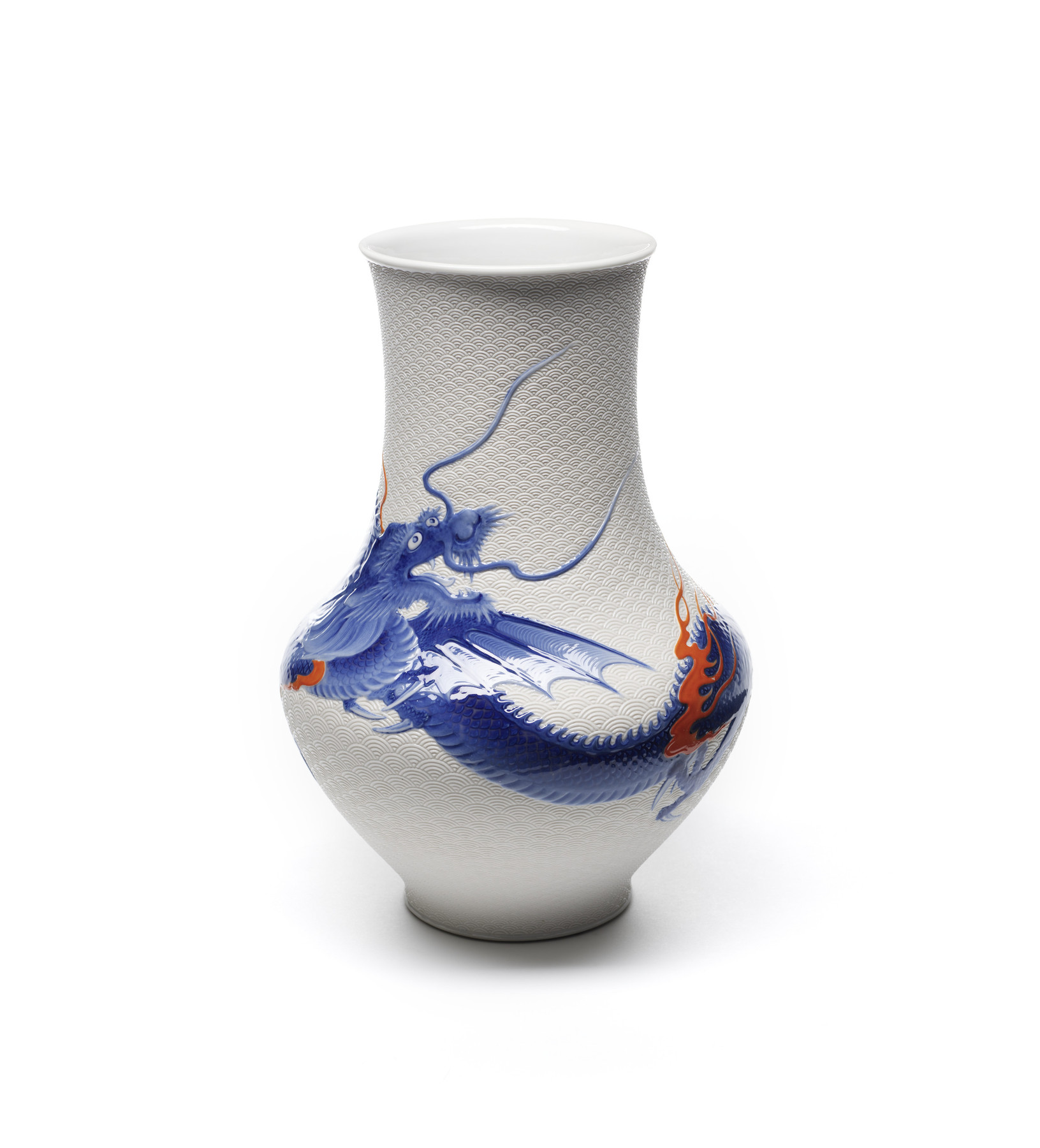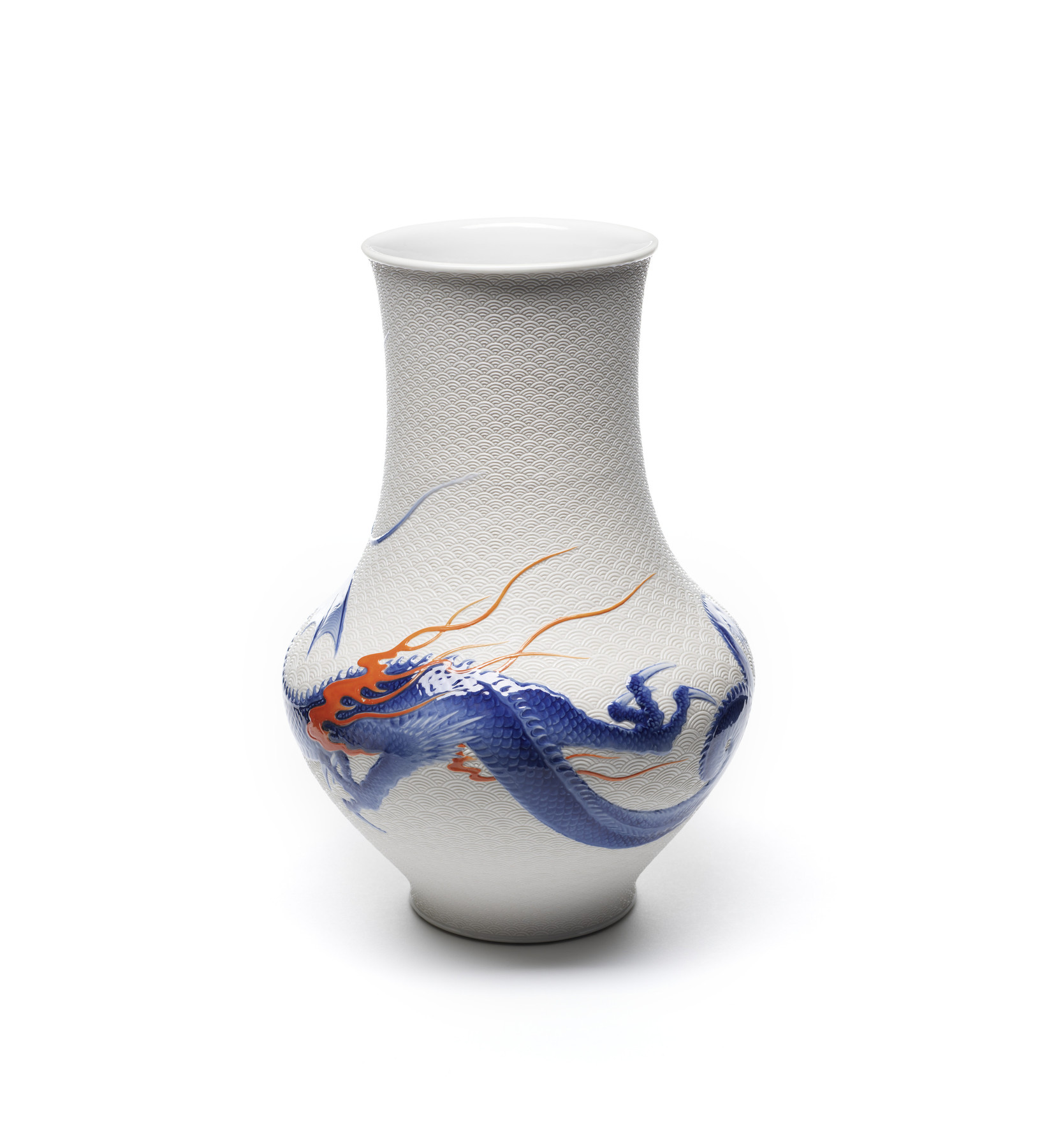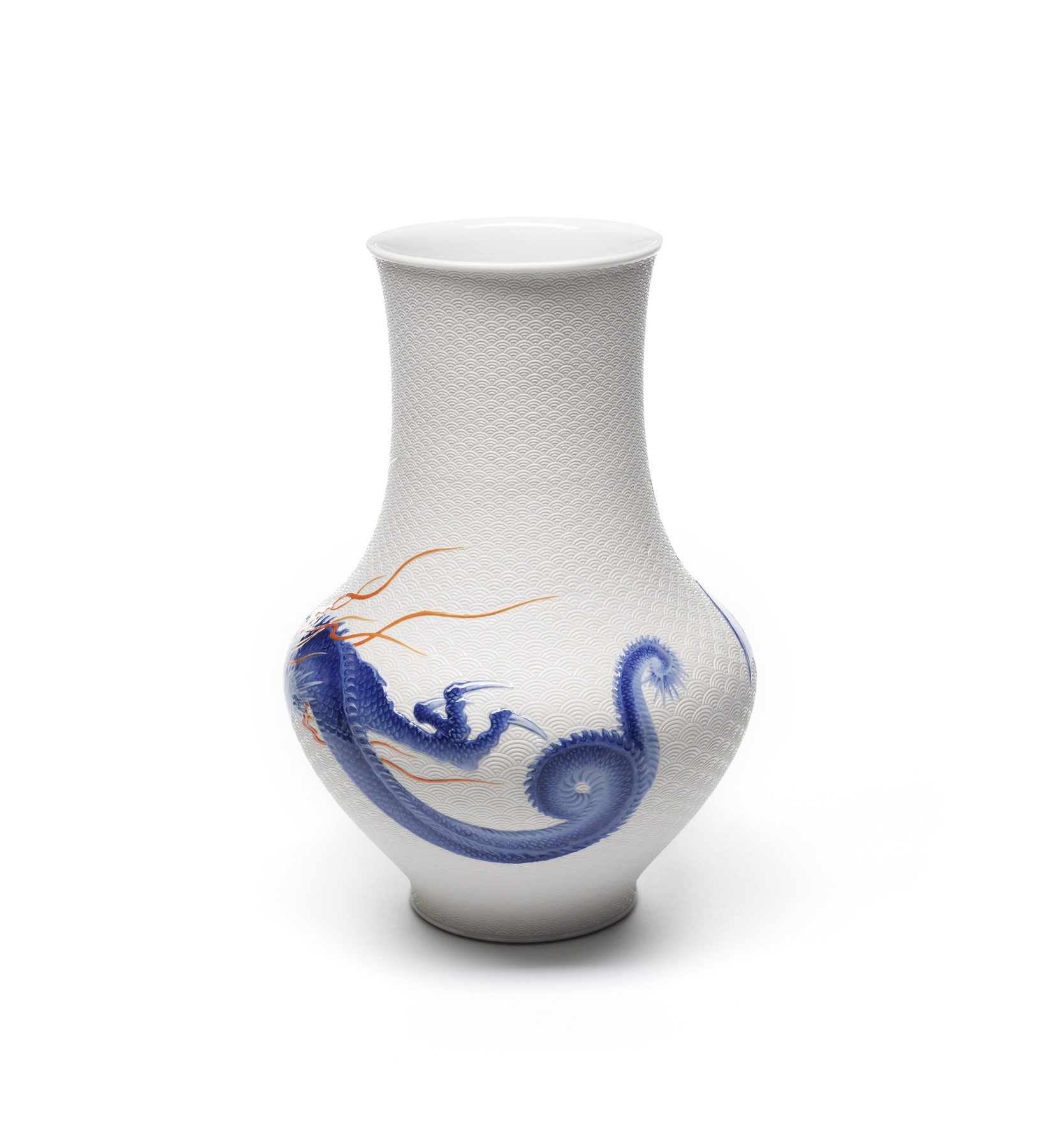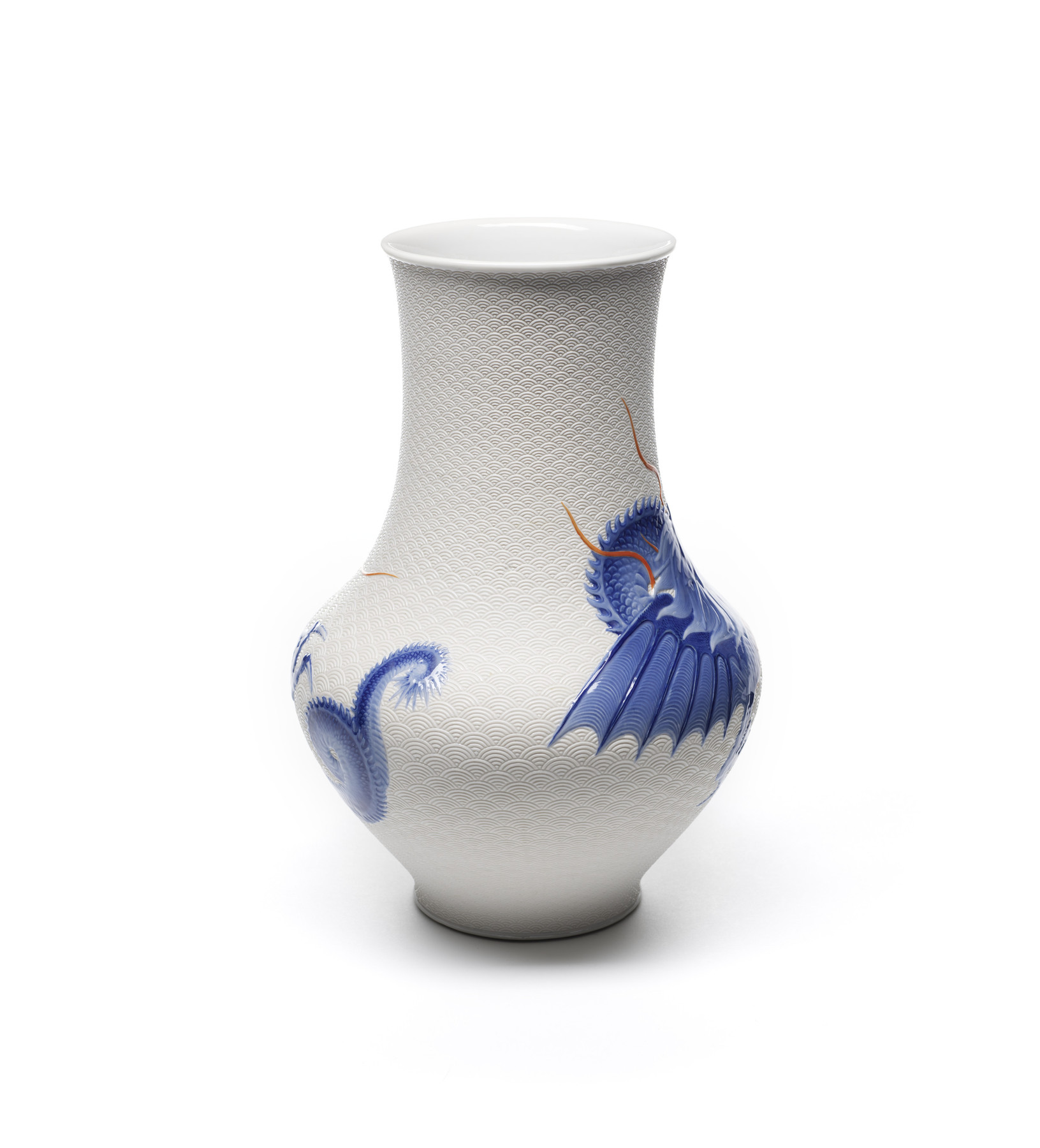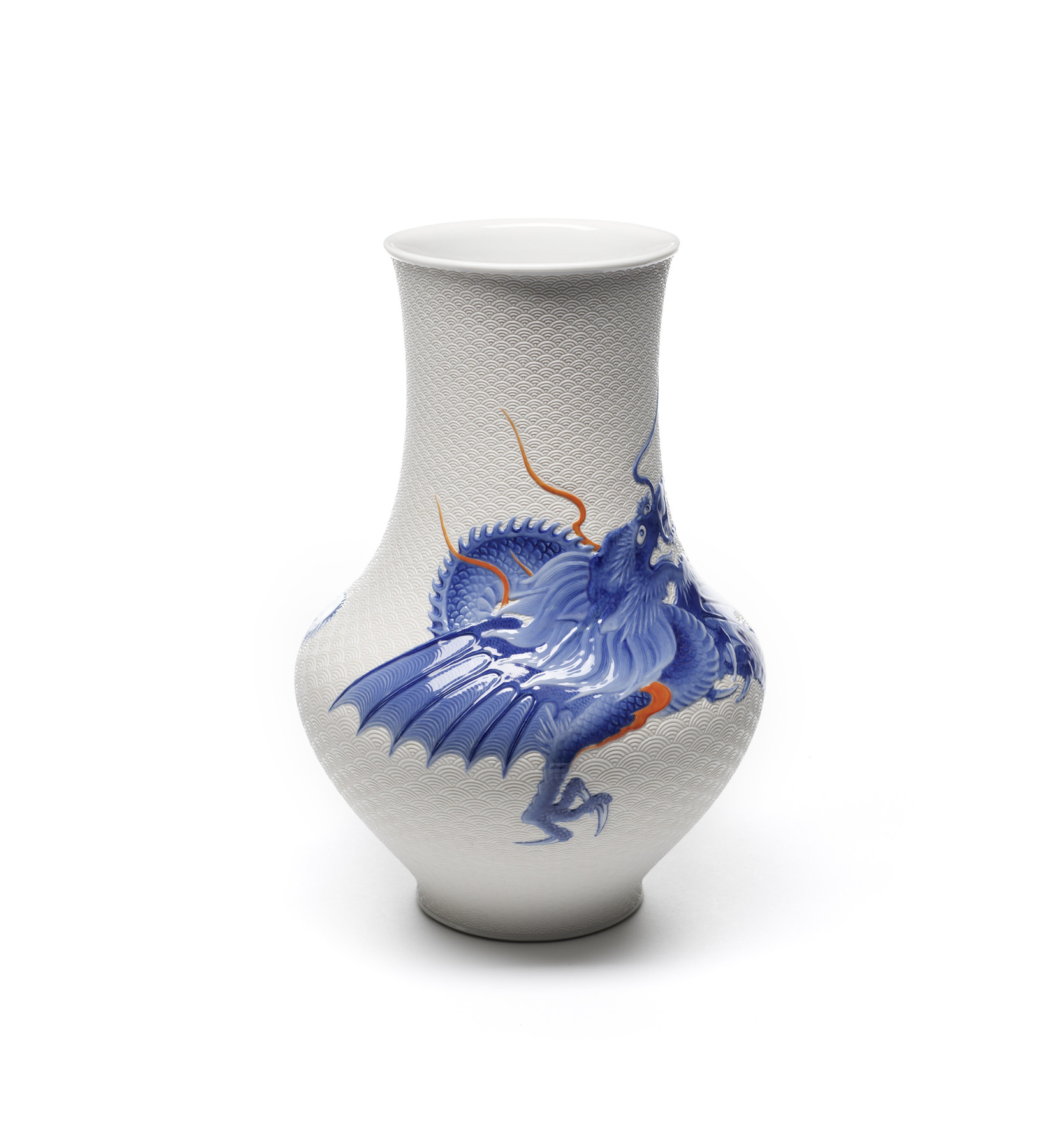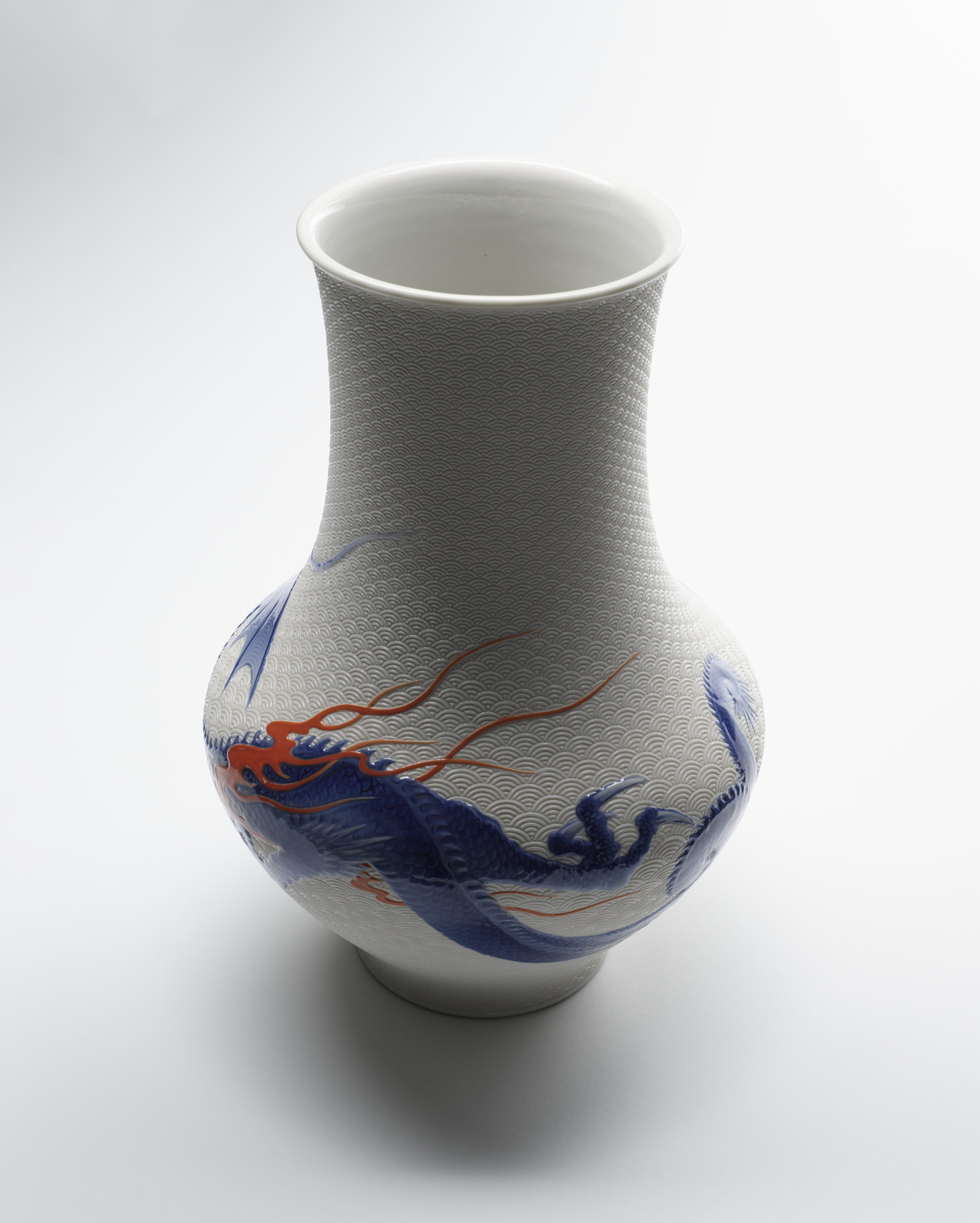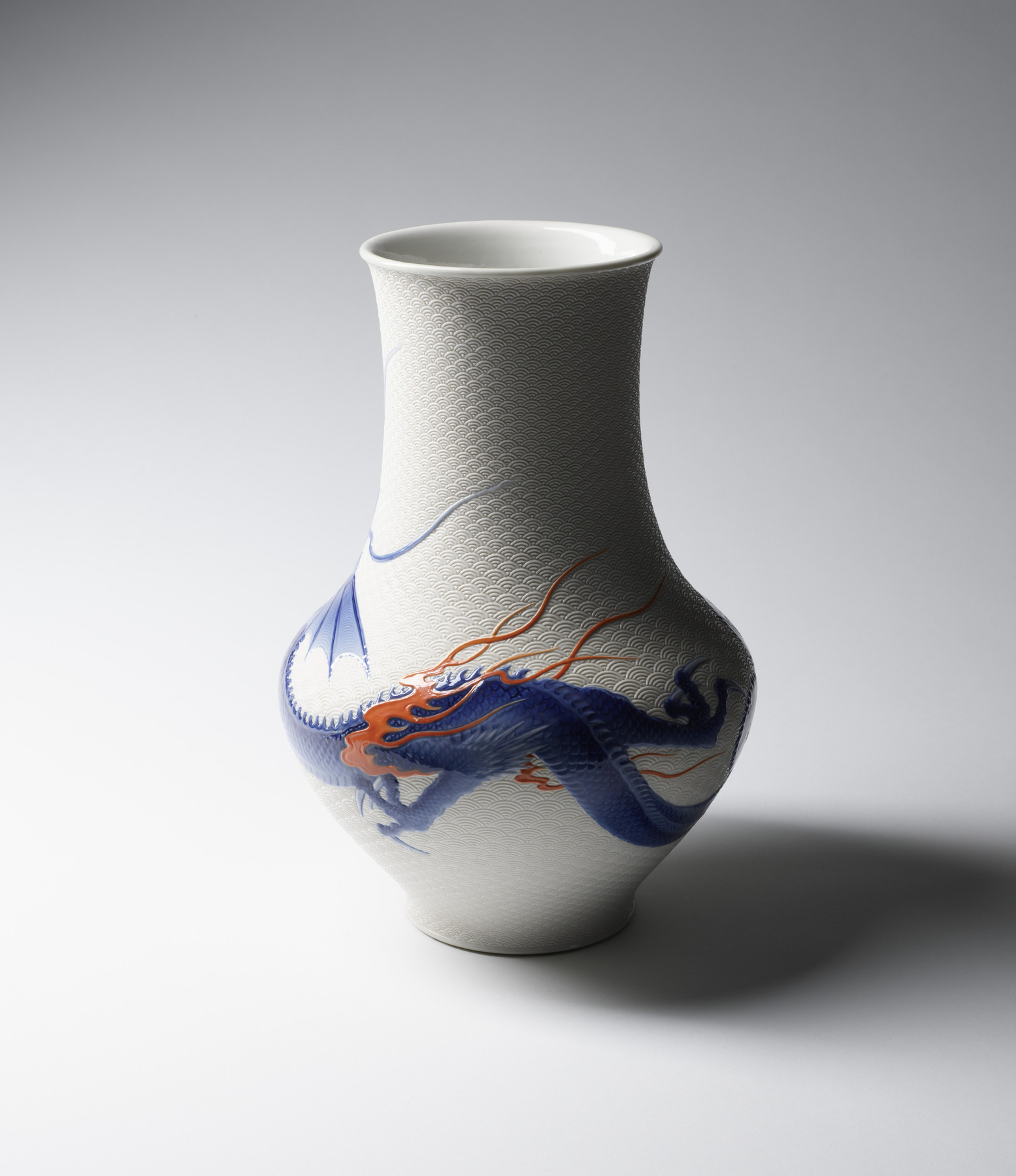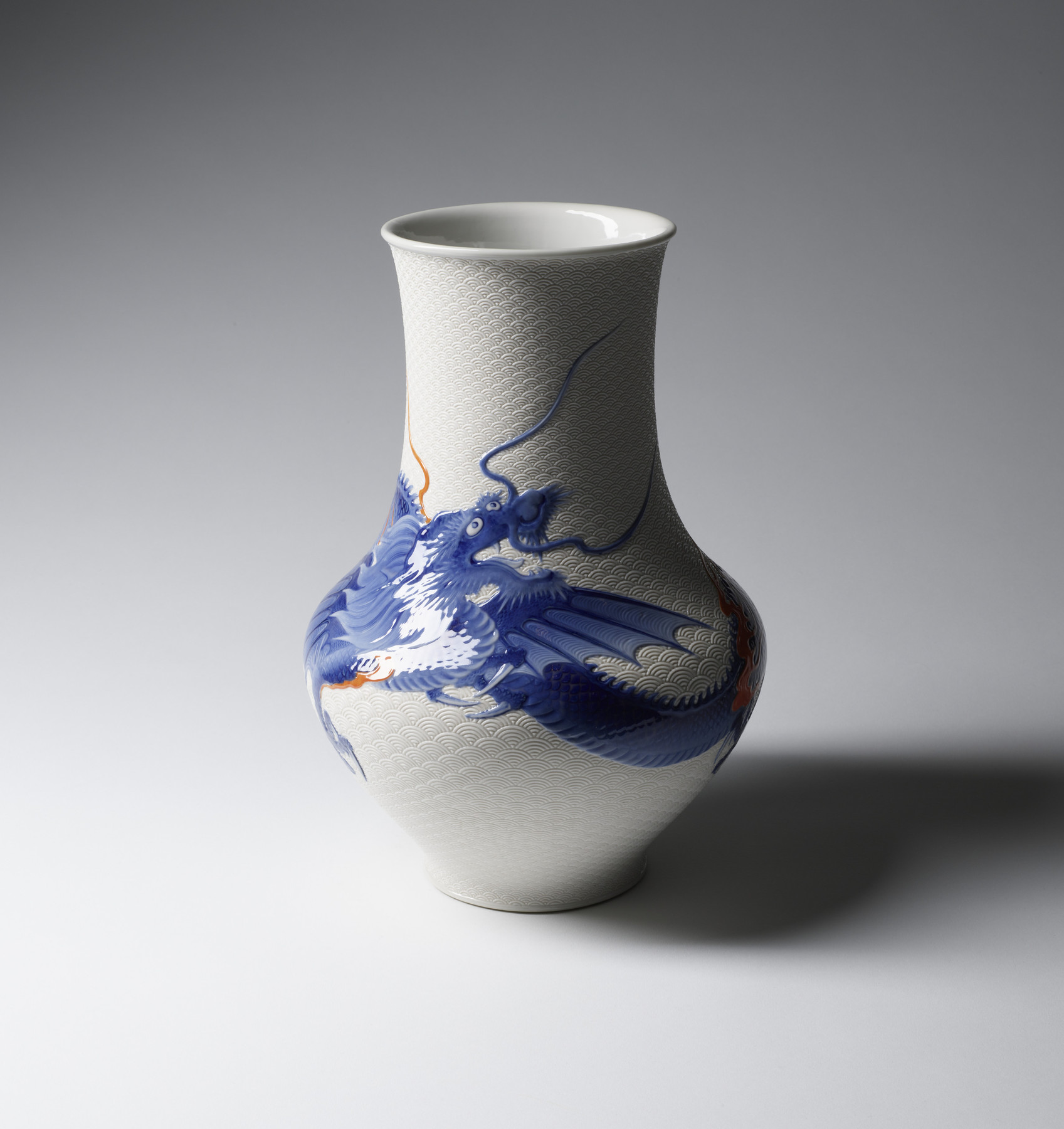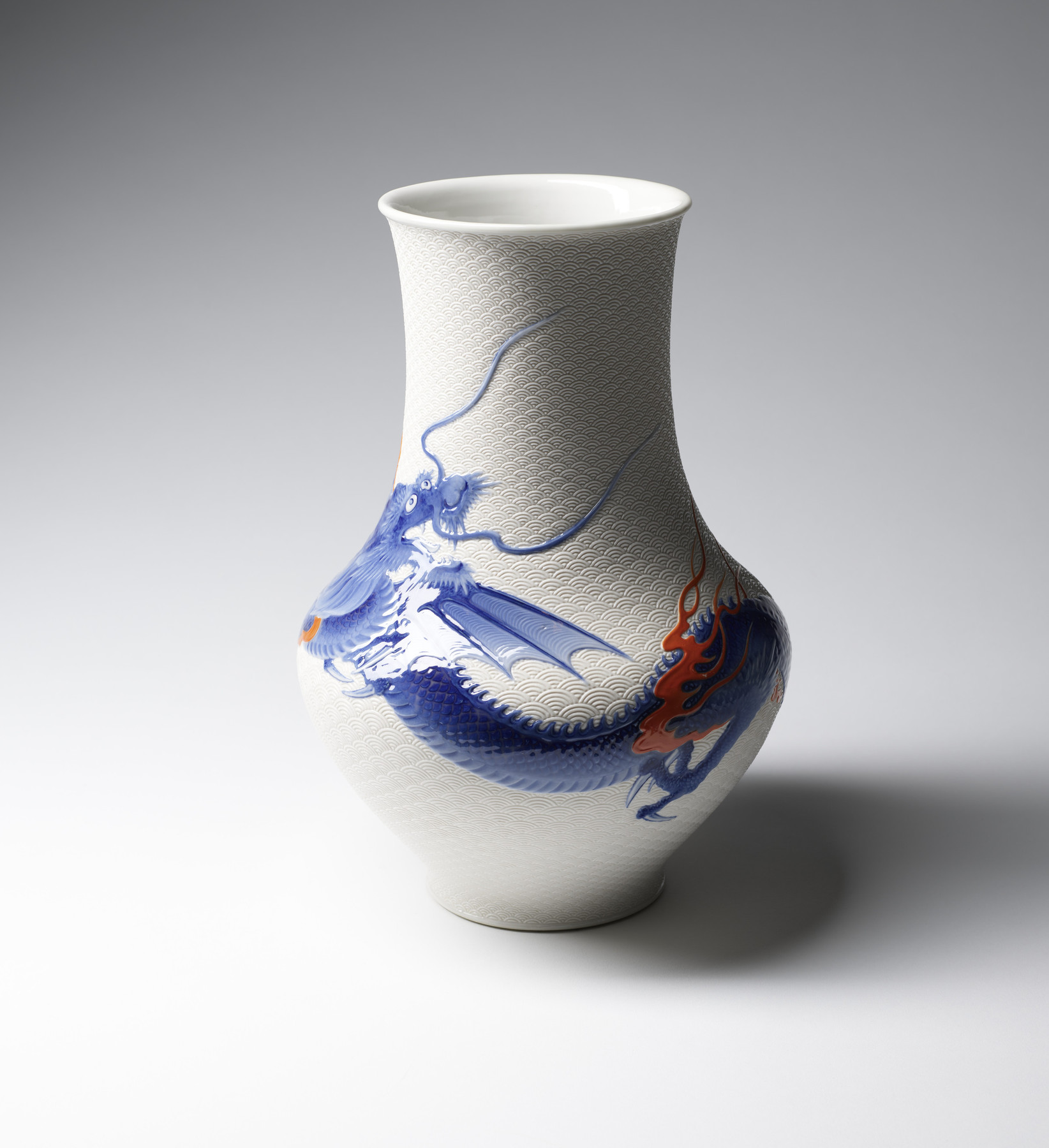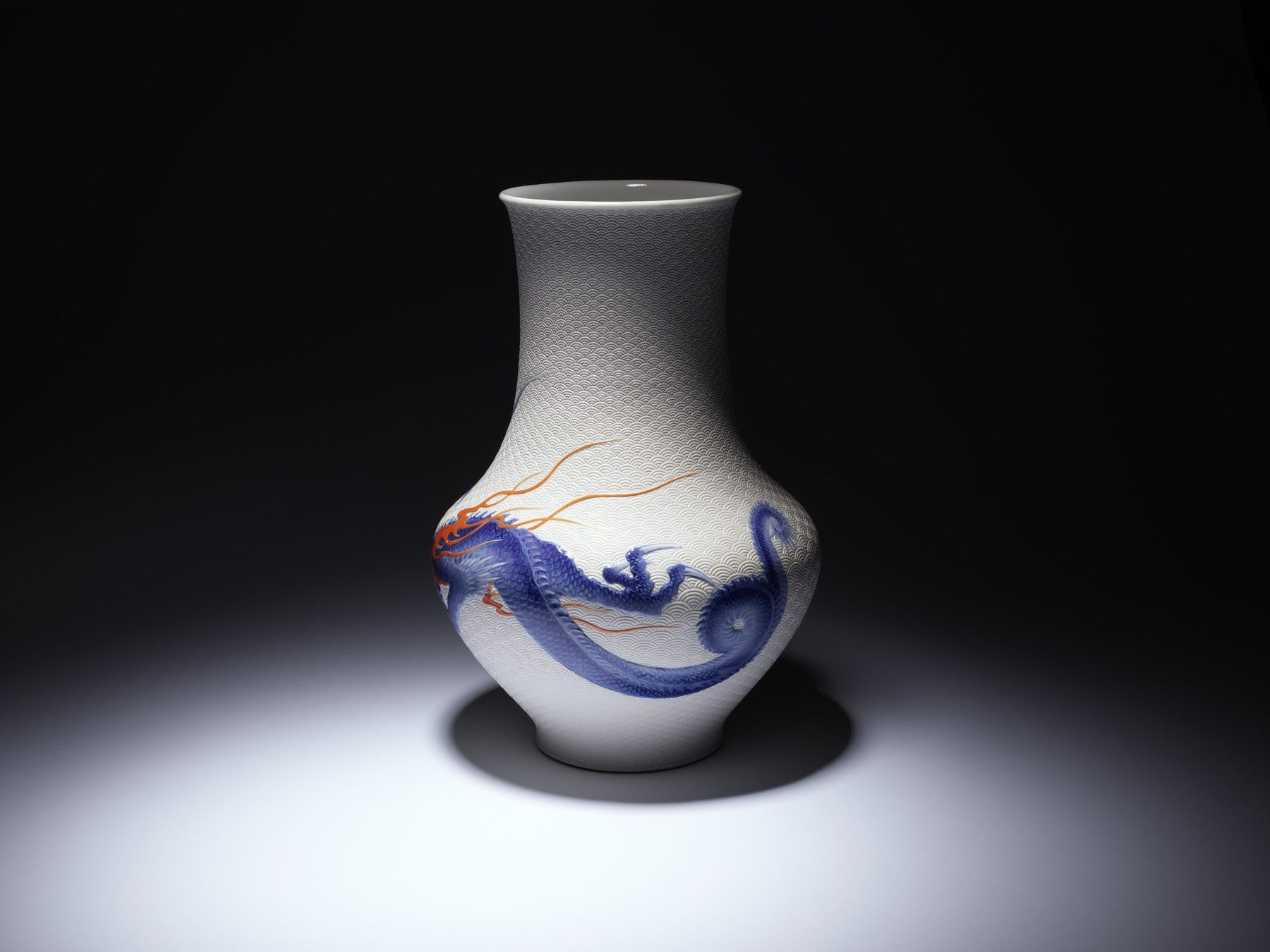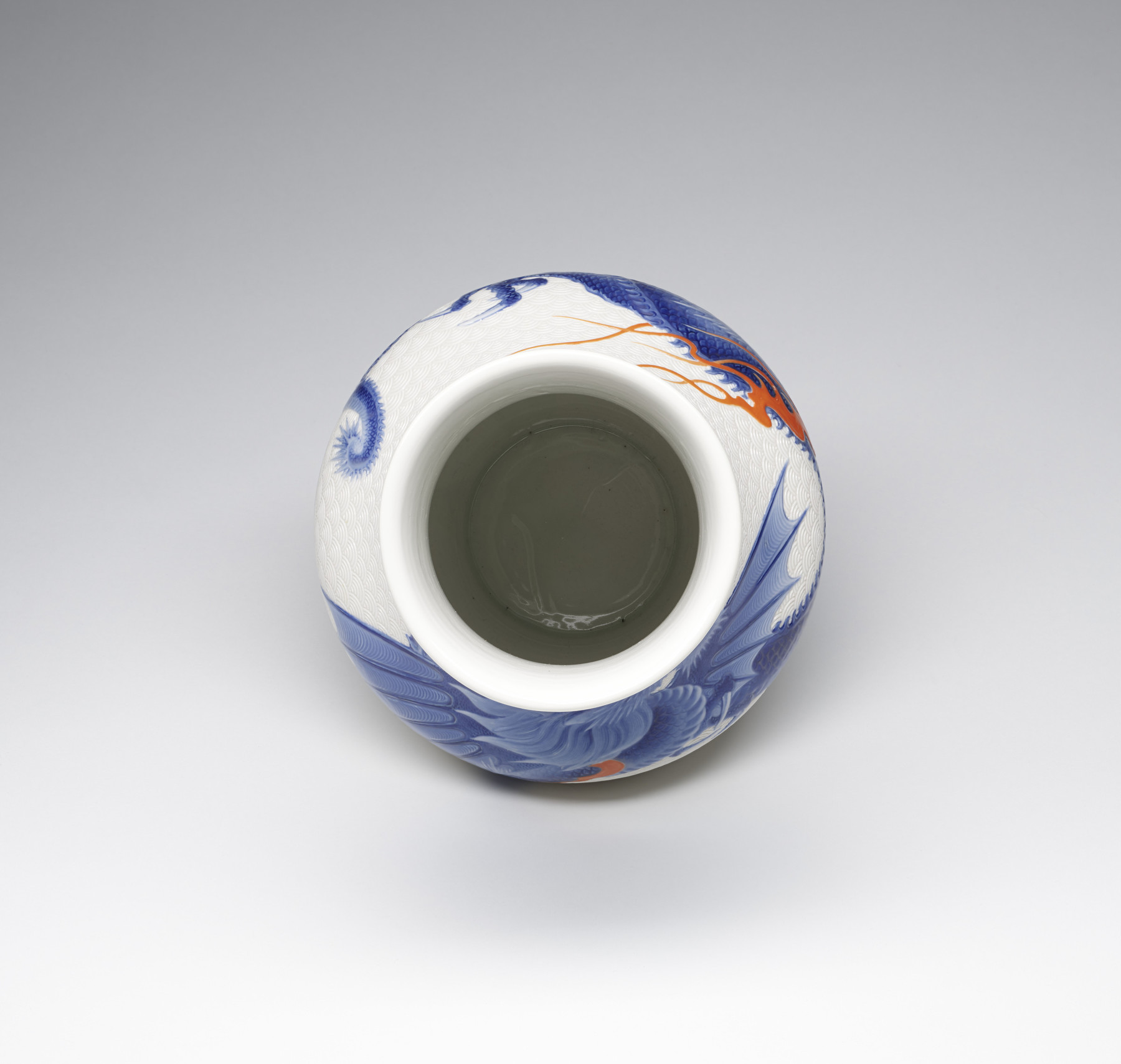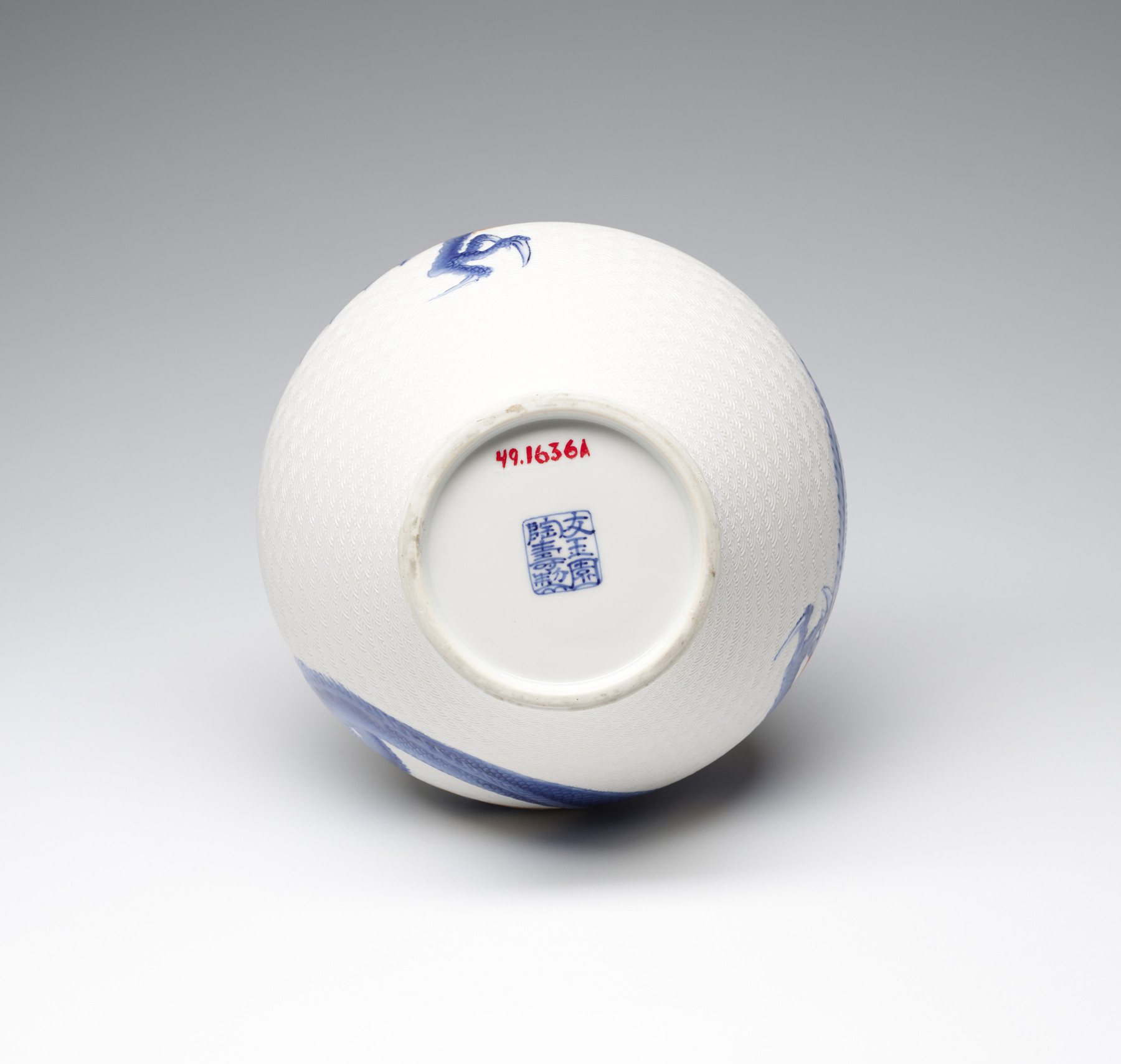Vase with Dragon
(Japan and Korea )
This vase was produced at the Yugyokuen ceramic workshop in Tokyo's Shinjuku neighborhood. Kato was the son of a potter from Seto, one of Japan's famous historical centers of pottery production. He moved from Seto to Tokyo in 1874 and sought work in one of the modern ceramic factories, the Edogawa Ceramic Plant, which had been established as a center for the development of the arts following Japan's participation in the Vienna International Exposition of 1873. Kato quickly became one of the leading modern porcelain artists in the Tokyo area, competing with other artists at national and international art competitions and fairs.
Inscription
Provenance
Provenance (from the French provenir, 'to come from/forth') is the chronology of the ownership, custody, or location of a historical object. Learn more about provenance at the Walters.
The Panama-Pacific International Exposition [no. 115], San Francisco, 1915; Henry Walters, Baltimore, 1915, by purchase; Walters Art Museum, 1931, by bequest.
Exhibitions
| 2016-2017 | JapanAmerica: Points of Contact, 1876-1970. Herbert F. Johnson, Ithaca; Crocker Art Museum, Sacramento. |
| 1984 | Master Potters of Japan. The Walters Art Gallery, Baltimore. |
| 1980-1981 | Hirado Porcelain. The Walters Art Gallery, Baltimore. |
Conservation
| Date | Description | Narrative |
|---|---|---|
| 12/5/2011 | Examination | Examined for condition |
| 12/5/2011 | Examination | The red-orange overglaze was examined using a Geiger counter and found not to contain uranium. |
Geographies
Japan, Tokyo (Place of Origin)
Measurements
H: 13 9/16 in. (34.5 cm)
Credit Line
Acquired by Henry Walters at the Panama-Pacific International Exposition, San Francisco, 1915
Location in Museum
Not on view
Accession Number
In libraries, galleries, museums, and archives, an accession number is a unique identifier assigned to each object in the collection.
In libraries, galleries, museums, and archives, an accession number is a unique identifier assigned to each object in the collection.
49.1636


